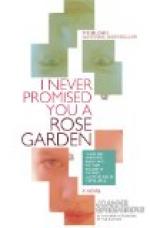This garden, such as it was, could be truly called hardy, insomuch as all the care it had received for several years was an annual cutting of the longest grass. The fittest had survived, and, among herbaceous things, whatsoever came of seed, self-sown, had reverted nearly to the original type, as in the case of hollyhocks, phlox, and a few common annuals. The long grass, topped by the leaves that had drifted in and been left undisturbed, made a better winter blanket than many people furnish to their hardy plants,—the word hardy as applied to the infinite variety of modern herbaceous plants as produced by selection and hybridization not being perfectly understood.
While a wise selection of flowering shrubs and truly hardy roses will, if properly planted, pruned, and fertilized, live for many years, certain varieties even outlasting more than one human generation, the modern hardy perennial and biennial of many species and sumptuous effects must be watched and treated with almost as much attention as the so-called bedding-plants demand in order to bring about the best results.
The common idea, fostered by inexperience, and also, I’m sorry to say, by what Mary Penrose dubs Garden Goozle, that a hardy garden once planted is a thing accomplished for life, is an error tending to bitter disappointment. If we would have a satisfactory garden of any sort, we must in our turn follow Nature, who never rests in her processes, never even sleeping without a purpose. But if fairly understood, looked squarely in the face, and treated intelligently, the hardy garden, supplemented here and there with annual flowers, is more than worth while and a perpetual source of joy. If money is not an object to the planter, she may begin by buying plants to stock her beds, always remembering that if these thrive, they must be thinned out or the clumps subdivided every few years, as in the case of hybrid phloxes, chrysanthemums, etc., or else dug up bodily and reset; for if this is not done, smaller flowers with poorer colours will be the result.




